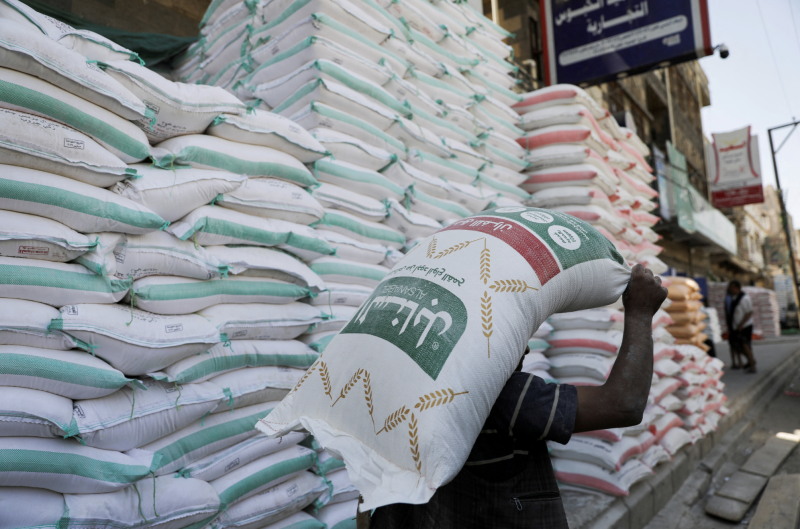11m children under five at risk of extreme hunger or starvation across eleven countries


Potential risk of famine in Yemen and South Sudan, warns Save the Children.
An estimated 11 million children under five are facing extreme hunger or starvation[i] across eleven countries in Africa, the Caribbean, Middle East and Asia, new analysis by Save the Children reveals, with the potential risk of famine in Yemen and South Sudan. The aid agency is calling for an urgent and large-scale global response to help avert a humanitarian catastrophe.
Save the Children is particularly concerned for children in five ‘hunger hotspot’ countries/regions where the food crisis is extremely serious, made worse by insecurity: Afghanistan, Yemen, South Sudan, Democratic Republic of Congo and the Central Sahel (Mali, Niger & Burkina Faso). COVID-19, conflict and climate change could tip millions of families over the edge.
Inger Ashing, CEO of Save the Children, said:
“Levels of acute hunger, which were already at record global highs before the pandemic, are continuing to rise. Left unchecked, this puts millions of children’s lives at risk. The global hunger crisis is caused by a persistent lack of access to nutritious food in some of the most vulnerable communities in the world, and threatens to set countries back by years or even decades in their efforts to reduce child mortality and alleviate poverty. The situation is critical. We are looking at the very real possibility that thousands of children could die.
“Ending global hunger and malnutrition will not be easy. The international community must address the root causes of food shortages and malnutrition while at the same time providing immediate support to hungry and undernourished children.
“Only by putting an end to global conflicts, tackling chronic poverty as well as the risks brought by climate change, and building more resilient communities with access to strong nutrition services, will we be able to ensure that every child can grow up healthy. The time to act is now. Millions of children’s lives hang in the balance.”
Save the Children analysed populations facing food insecurity across eleven of the worst-affected countries, using data from the World Food Programme and the Integrated Phase Classification / Cadre Harmonisé – a famine early-warning system. Then, using UN population data, the agency extrapolated the estimated number of children under five considered to be at risk of hunger or starvation across all eleven countries. This is because the first five years of a child’s life are critical. Without enough nutritious food to eat or the ability to absorb the right nutrients, children under five are at high risk of acute malnutrition which in turn can cause stunting, impede mental and physical development, increase the risk of developing other illnesses and ultimately cause death.
38-year-old Aker* from Abyei in South Sudan often has nothing to feed her three children. Her 8-month old daughter Adhar* was suffering from severe malnutrition. There are no proper health facilities to treat Adhar* where they live, and so mother and daughter had to travel over 60 kilometres on foot to reach the nearest clinic. Aker* said:
“Most of the time the money I earn isn’t enough to buy food to feed my children and they go hungry. My daughter started to deteriorate because she wasn’t being fed enough. She began to lose weight and went for three days without food. And because I didn’t have enough to eat my body could not generate enough breast milk to feed her. I have no food at home to feed my children because of a poor harvest due to drought in 2019 and then flooding in 2020.”
Two-year-old Hamdi* was brought to a Save the Children clinic in Yemen malnourished. When Hamdi* got sick his father Saleh* was terrified. He thought he would lose his son. Speaking in August, he told Save the Children:
“To be honest, life is hard, and work comes and goes. People are living in bad conditions, diseases are everywhere. My son was unwell, I thought he would die. I would bring him back and forth [to the clinic]. There was a fuel crisis, and I couldn't afford transportation.”
In war-torn Yemen, 10.3 million children are facing food shortages. In just the southern half of the country 587,573 children under five are suffering from acute malnutrition, including nearly 100,000 on the brink of starving to death. The situation in the north is also perilous. A dramatic increase in food prices has affected the ability of families to feed their children, leading to an increase in cases of malnutrition and a potential risk of famine.
Afghanistan is also on the front line of the hunger crisis. A third of the country is facing acute food shortages including more than 1.5 million children under five. COVID-19, movement restrictions, and inability to find work and rising food prices are also pushing this food crisis into urban areas on a scale not previously seen, while increasing insecurity and armed violence are only making things worse.
In the Democratic Republic of Congo (DRC) insecurity and conflict have had a devastating impact on people’s capacity to access food and 21.8 million people across this vast country are facing hunger, including nearly four million children under five. A recent uptick in insecurity in the east is posing yet another challenge to food security in a country considered to be one of the largest and most complex humanitarian crises in the world.
Children in South Sudan remain in serious peril because of the cumulative effects of years of conflict, flooding and a poor economy which have destroyed livelihoods, disrupted food production and markets, wrecked the economy and forced four million people to flee their homes. More than half of the population (6.5 million) have faced food insecurity this year, including nearly one million children under five. Some 300,000 children are suffering from severe acute malnutrition – the most dangerous and deadly form of extreme hunger. The country is facing a potential risk of famine.
The countries of the Central Sahel (Burkina Faso, Mali, Niger) have for years been affected by the impacts of climate change, which has in turn disrupted availability and access to food and created the current nutrition crisis. In the last couple of years growing insecurity across the region has aggravated the problem by disrupting access to social services, food production and the pastoralist economy. Across these three countries more than 650,000 children under five are facing severe hunger.
Ms Ashing continued: *“**Conflict, insecurity, a changing climate, extreme weather events, and recent invasions of desert locusts are all driving up levels of global hunger and malnutrition, leaving entire populations extremely vulnerable to additional shocks like COVID-19 and its secondary impacts, including lockdowns, school closures and economic recession.*
“We cannot escape the fact that many of the key drivers of hunger and malnutrition are human-made, and many of the consequences for children are avoidable. This is an indictment of the international community and our collective failure to ensure every child survives and can thrive.
Millions of hungry and malnourished children need urgent support. Not only are people struggling to access healthy food but there is widespread disruption to the life-saving services designed to treat malnutrition as humanitarian access is shrinking at a time when it should be expanding.
Save the Children is calling for the international community to act fast to avoid a potentially devastating loss of life. The aid agency is also asking world leaders to prioritise humanitarian responses that provide urgent assistance to families facing hunger. Providing cash and vouchers directly to families – alongside essential nutrition support – is one of the best ways to address hunger and malnutrition in the short-term, as well as support more long-term community resilience enabling families to better withstand future shocks.

Aden — Yemen Airways has announced new updates to its ticket cancellation (VOID) policy, introducing financial penalties on travel agents in…

Geneva – The United States announced that Yemen will not be among the countries benefiting from a new $2 billion funding pledge for United Na…

Paris — The French humanitarian organization Acted announced that it has delivered cash assistance to nearly 89,000 people affected by displa…